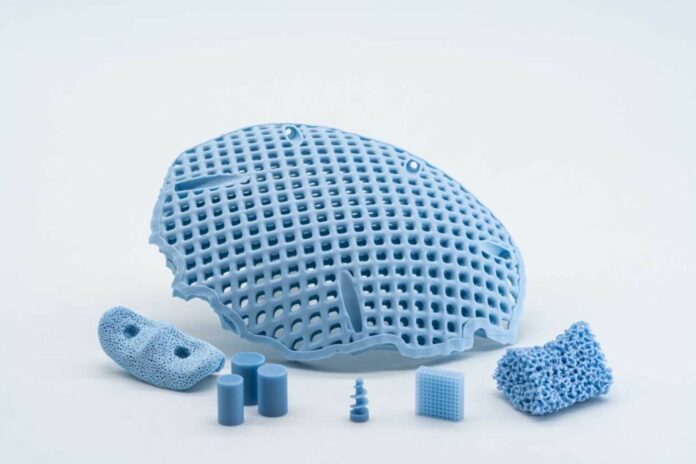So far, the use of 3D printing for bone replacements has often been complicated to leverage due to financial and quality reasons – yet, ceramics remain an interesting material candidate for medical devices and implants due to their biocompatibility, low thermal conductivity, and lighter intrinsic weight. Furthermore, as Dr. Daniel Bomze, Director Medical Solutions at Lithoz eplained during an exclusive interview with 3D ADEPT Media, ceramics can help the body repair itself; they can be resorbed by the body, removing the risks of second surgeries.
However, to address the aforementioned limitations, ceramic 3D printing company Lithoz has developed an improved human bone-like ceramic material called LithaBone HA 480.
According to Lithoz, the planned interaction of the bone substitute material with adjacent bone and tissues depends on the optimized design of geometries which – accordingly – determines clinical success, as bone regrows along the material’s guide structures and the ceramic dissolves in the body.
Some of the major features that make this material an interesting option for medical devices include its ability to deliver higher wall thicknesses (previous maximum wall thicknesses of <1.6mm (observed with the LithaBone HA 400 material) have been increased to 10mm, while minimum wall thicknesses required have been reduced even further, significantly broadening the range of applications); better imaging accuracy of fine structures – especially when working with hydroxyapatite. Lithoz explains that the LithaBone HA 480 material delivers reduced overpolymerization with a simultaneously improved depth of cure, resulting in a simpler selection of build parameters and a significantly more stable manufacturing process.
Another major improvement is a ten-fold longer shelf life which eliminates the obstacle of previous materials’ short shelf life impacting on availability required for urgent surgical interventions. Furthermore, parts are significantly easier to clean, making up valuable time during often vital medical interventions. Experienced users have confirmed significantly faster and easier cleaning processes thanks to an improved binder composition.
First user feedback on the utilization of this material comes from KLS Martin, a medical technology company that has been 3D printing bone substitute implants since 2015. LithaBone HA 480 and the specification of the development goals were a direct outcome of invaluable customer feedback from this collaboration. “We at KLS have been producing CMF implants for human use on our Lithoz CeraFab printer since 2015, with excellent results in terms of accuracy of fit, tolerability and healing success. We already have had the chance to work with HA 480 and the results are outstanding: from mechanical properties over higher wall thickness to size and lattice structures, LithaBone HA 480 has convinced us of a considerable improvement compared to its predecessor”, Adem Aksu, Director Development Biomaterials at KLS Martin comments.
Remember, you can post job opportunities in the AM Industry on 3D ADEPT Media or look for a job via our job board. Make sure to follow us on our social networks and subscribe to our weekly newsletter : Facebook, Twitter, LinkedIn & Instagram ! If you want to be featured in the next issue of our digital magazine or if you hear a story that needs to be heard, make sure you send it to contact@3dadept.com






